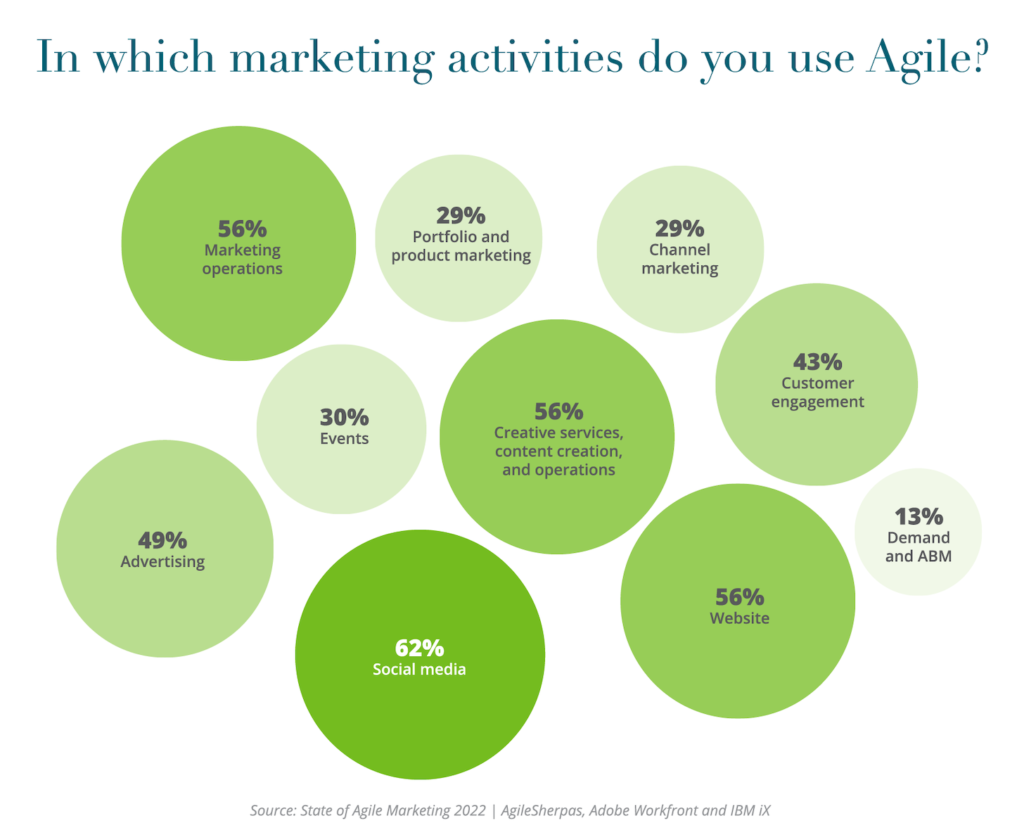While working on an article for Search Engine Land, Agile Marketing For Conversion Optimization, it struck me that there really should be an Agile Marketing Manifesto.
Just as the Agile Manifesto helped coalesce a diverse collection of software developers and their various agile methodologies under a common banner, there’s an opportunity for marketers to throw off the shackles of legacy processes from the last century and declare allegiance to a new set of guiding principles.
While a couple of the ideals of the original Agile Manifesto are directly applicable:
Individuals and interactions over processes and tools
Responding to change over following a plan
…the other two about “working software over comprehensive documentation” and “customer collaboration over contract negotiation” aren’t quite as relevant.
So I’ve been considering a few alternatives that an agile marketing manifesto might include:
Intimate customer tribes over impersonal mass markets
Testing and data over opinions and conventions
Numerous small experiments over a few large bets
Engagement and transparency over official posturing
As they say, while there is value in the items on the right, we value the items on the left more.
Wondering what agile marketing is all about? Here are some great posts from some agile marketing pioneers, each of whom would have my vote as founding signatories on an agile marketing manifesto:
- Matt Blumberg, CEO of Return Path, and one of the first people to blog about agile marketing;
- Jascha Kaykas-Wolff, VP of marketing at Webtrends in this interview with John Cass;
- Frank Days, director of new and social media at Novell, has two great posts on a seven step approach to agile marketing and sex and the agile marketer;
- Marketbright’s company blog has an excellent overview of the agile marketing method that they used internally and now recommend to customers.
Do you have other principles that should be in an agile marketing manifesto? Or other stories of nascent agile marketing from the field? I’d love to hear about them.



Hi Scott!
I think the five points you’ve listed are a great start. I would add a higher-level principle, which is to step back and ask, “What Would Google Do?” (Jeff Jarvis
I think you’ve hit most of the essence already. Engage the customer in conversations… Focus on building a community… See yourself as a platform… Be distributed… Etc…
The essence of “marketing” in the Google age is to be so customer-driven that at least your customers are active participants in shaping your message, and at best, you don’t even NEED to think about “marketing.”
Does Google advertise? No. Do they have an insanely thriving, scalable community that spreads their message better and more responsively than they ever could? Yes.
Great post. I can not overemphasize the importance of trasparency in being a successful agile/iterative marketer. Above all else, this is key.
Great suggestions, John! There’s a whole discussion worth having around the idea of what “be distributed” means when you turn it from a challenge to an opportunity.
Thanks for the comment, Jascha — and the emphasis on transparency. Easy to say, hard to do, but I agree with you: essential to making agile thrive.
Not sure this is what you are looking for and don’t want to come off as a self-promotional a-hole, but I’ll share two things.
First, I have an example of Agile Marketing from a client of mine (JackBe), which resulted in being named a Finalist for a Forrester Groundswell award. Links are below.
Also, I’ve written a part of this manifesto (I call it Agile Marketing Development) already in my eBook Dandelion Marketing: http://www.dandelionmarketing.biz
Again, I think this is relevant and hope you take it in that vein.
JackBe/Forrester Links
http://groundswelldiscussion.com/groundswell/awards2009/detail.php?id=67
http://forrester.typepad.com/groundswell/2009/10/winners-of-the-2009-forrester-groundswell-awards.html
http://www.jackbe.com/enterprise-mashup/content/groundswell-award
Scott,
I’d add “Getting out of the building over formal market research”. The phrase “getting out of the building” comes from Steve Blank, the author of “Four Steps to the Epiphany”, and it describes for me the importance of talking to customers and gathering information that isn’t always quantifiable. I’d also probably add some addition to your “numerous small experiments” to emphasize the time aspect. Agile marketing involves succeeding (or failing) quickly, rather than experiments that take years to succeed or fail.
The agile development manifesto was the result of a group of developers getting together to agree on a set of principles, then posting it and evangelizing it. Is there any similar effort on the part of marketers? I’d love to be a part of it and am happy to help organize something.
Great suggestion, Jim. I’m a big fan of Steve Blank’s as well.
The rise of digital has, unfortunately, probably reinforced many marketers’ tendency to analyze customers from a computer screen. But I agree: Google Analytics is no substitute to getting out in the world and talking to real people, seeing them in their real work.
To my knowledge, there hasn’t been an “agile marketing summit” to kick off such a declaration of agility — but it would be great to pull one together.
Great article.
Pingback: What is agile marketing?